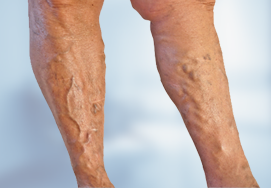Heel Pad Avulsions
Recommended if you have soft tissue shearing, degloving or avulsion that result from crushing injury of the foot

- What are heel pad avulsions?
- What are the treatment options for heel pad avulsions?
- What are the types of the surgeries?
- Which individuals are suitable for the surgery?
- What is the aftercare of the surgery?
- What are the postsurgical considerations?
What are heel pad avulsions?
Partial or complete tearing of the heel occurs in situations like road accidents. Crush injuries to the foot are associated with avulsion injuries of the heel pad. Sometimes, heel pad avulsion is associated with skeletal injury. The heel pad avulsion injuries can be partial or complete. When the heel pad tissue is avascular (inadequate blood supply), avulsion is said to be complete and requires the removal of complete tissue and reconstruction with soft tissue flaps. In the case of partial avulsions, the sensation is intact, and heel pad is viable and require debridement and reattaching the flap in position.
What are the treatment options for heel pad avulsions?
The aim of the treatment is to heal the soft tissues of the wound site, stabilization of the fractures and to prevent the muscle imbalance.
- Antibiotics: If the heel pad avulsion is in the initial stage, then your surgeon may recommend you to take antibiotics that include third-generation cephalosporin. Your surgeon may also prescribe adequate analgesics to relieve pain.
- Debridement and wound lavage: If the avulsion d severe, debridement is performed. Your surgeon performs the technique using scalpel or scissors to cut the dead tissue from the wound. Wound lavage is a flow of medicated solution through the open wound to remove cellular debris and surface pathogens. Debridement and lavage should be performed immediately to clean the wound prevent infection.
- Skin grafts : They are used when the avulsion is confined to non weight bearing area of the heel pad. They do not tolerate weight bearing and shearing forces well.
- Flap coverage, is vital for long term stable wound coverge. This is done by either a local , regional, microvascular free flap or a cross leg flap . Plastic surgeons are specially trained in flap coverage for such injuries.
What are the types of the surgeries?
Simple suturing to reattach the heel edges is not recommended as it may cause increased wound pressure that results in wound breakdown, infection and flap necrosis. The most commonly recommended surgical techniques for heel pad avulsions include:
- Use of multiple Kirschner wires (K-wires): Multiple Kirschner wires or K-wires are used to reattach a partial heel pad avulsion without using sutures. The wires are passed from avulsed heel pad, and the bony fragment will be reduced and fixed with the same wires.
- Flap coverage : the current concept in management of help pad avulsions is to provide flap coverage on weight bearing areas and cover non weight bearing areas with skin graft. Flaps are useful in wound coverage as they carry their own blood supply.
- Amputation: Amputation of the injured region is preferred in chronic conditions and if other treatment options have failed to heal the wound.
Which individuals are suitable for the surgery?
Your surgeon may recommend a surgery if you have soft tissue shearing, degloving or avulsion that result from crushing injury of the foot. If the avulsion is characterized by skin being cleaved from their deep bony attachments, then immediate surgical intervention would be appropriate.
If you have multiple comorbidities which risk multiple surgeries then reconstruction may not be offered as it may have more risk than benefit.
What is the aftercare of the surgery?
After the surgery, you are recommended to take an oral antibiotic combination of cephalosporin and clavulanic acid for one week. You must use walking supports to avoid weight on the surgical site. You can use regular normal saline dressings to aid wound healing by infection. You should undergo periodic evaluation of the wound and flap healing. You must follow your surgeon’s instructions carefully for fast recovery. Avoid weight on the surgical foot and you may start walking slowly 8 weeks after the surgery. If there is an excess pain at the surgical site, it will recover after few weeks as the wound starts healing.
What are the postsurgical considerations?
- You may have to wear special foot wear to prevent reinjury and ulceration
- You will have to avoid prolonged standing and other activities which can jeopardize reconstruction
- You will have to wear pressure garments for about a year after surgery to reduce edema and allow for flap maturation









